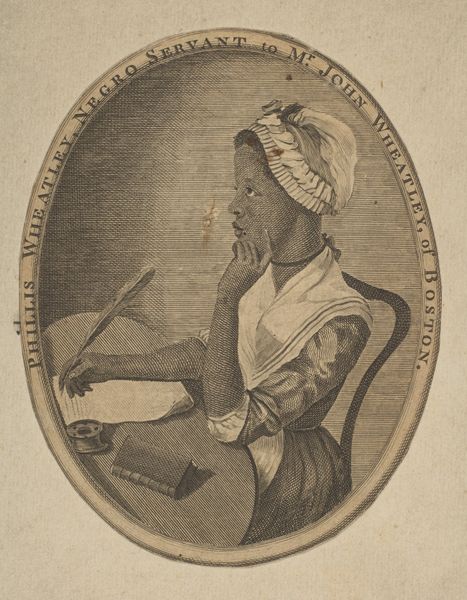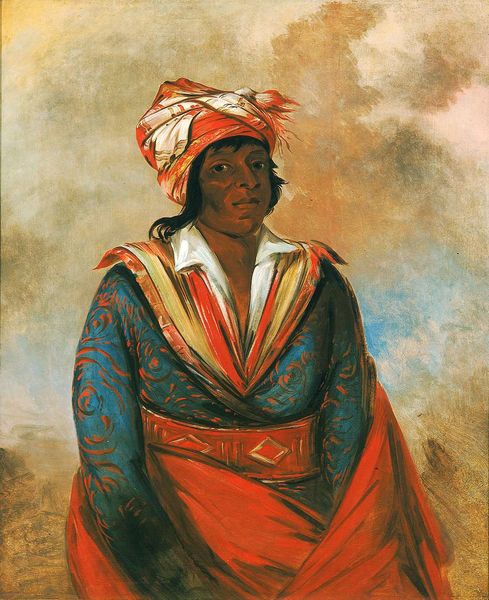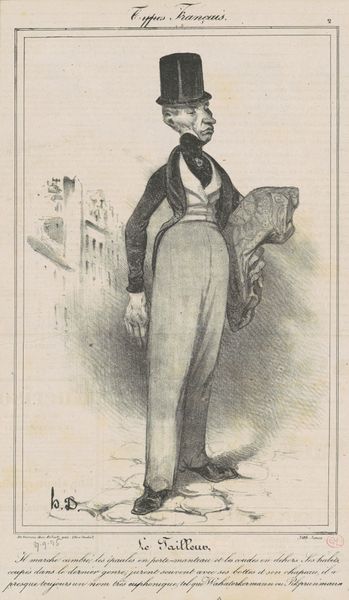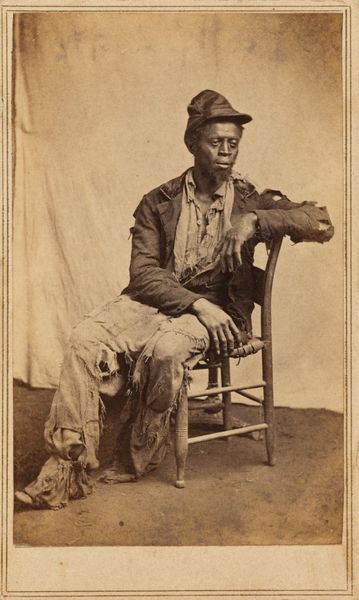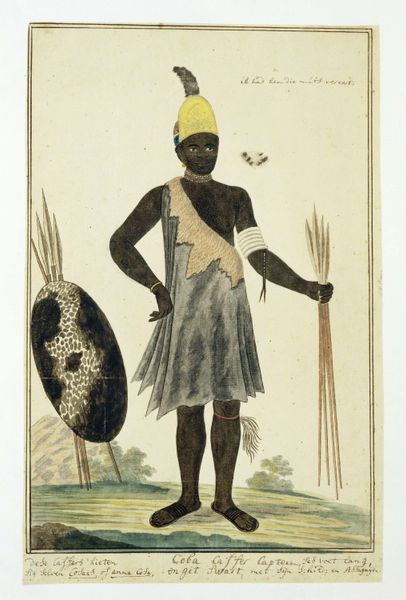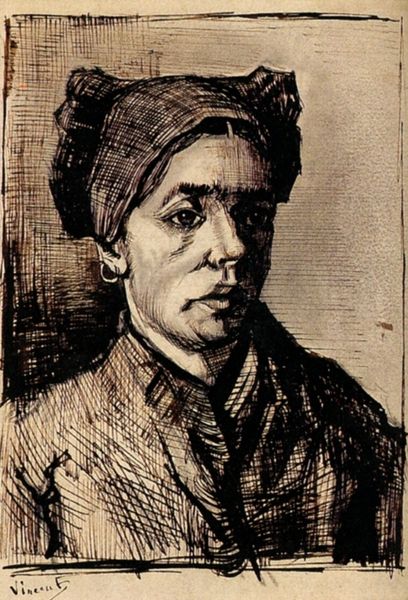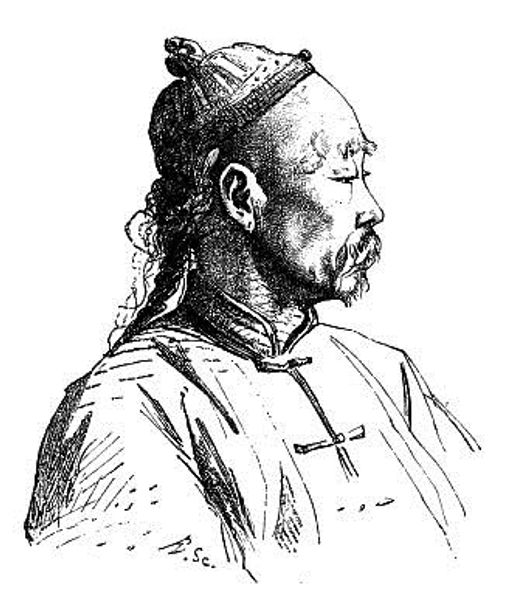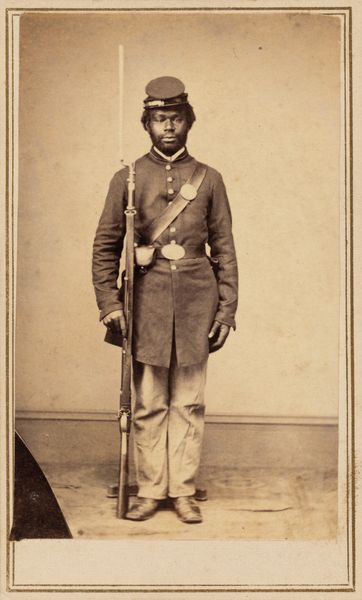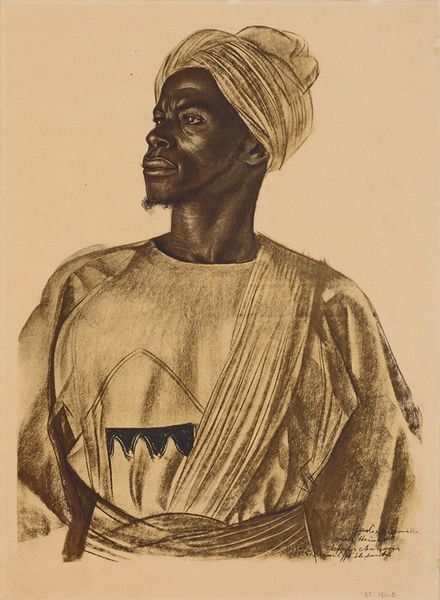
Copyright: Public domain
Editor: This drawing, "Injured Innocence," made in 1878 by Cassius Marcellus Coolidge, presents a striking portrait rendered in, what appears to be, pencil or charcoal. There's a vulnerability to the subject's gaze that makes me want to know more about him. What's your take? Curator: Let's consider the materiality of this work. As a drawing, it's inherently connected to the hand of the artist, the direct application of graphite to paper. This piece exists because someone labored to create it. What does it mean to portray "innocence" through the act of drawing itself in the 19th century, especially considering the subject's race and attire, which signal manual labor? Editor: That’s a good point. I hadn't considered the implied labor of creating the artwork itself. It does seem to be suggesting that labor is involved in his story somehow. Curator: Precisely. Notice the details of the hat and clothing – clearly worn and handmade objects. They are markers of a particular economic status, tied to agriculture perhaps, and to systems of production. Does the “innocence” the title proclaims, function as a commentary of labor exploitation? Consider also, the artist, Cassius Marcellus Coolidge, who later become famous for painting dogs playing poker, how might the material conditions of his artistic production have inflected a title such as ‘injured innocence?’ Editor: I'm starting to see this less as a straightforward portrait and more as a complex commentary on labor, materials, and social status. That it brings up more questions about cultural context makes it even more interesting. Curator: Exactly. It urges us to investigate the processes of representation and making, highlighting how the material world shapes the way we perceive innocence, race, and class. What appears innocent and natural, upon examination reveals an entanglement of power relations within the sphere of labor, and ultimately, commodification of labor and the art object. Editor: Thanks for sharing those perspectives. I see so much more now beyond the surface level of the portrait. Curator: My pleasure. I, too, am beginning to wonder if innocence can be salvaged out of this complex interplay.
Comments
No comments
Be the first to comment and join the conversation on the ultimate creative platform.

